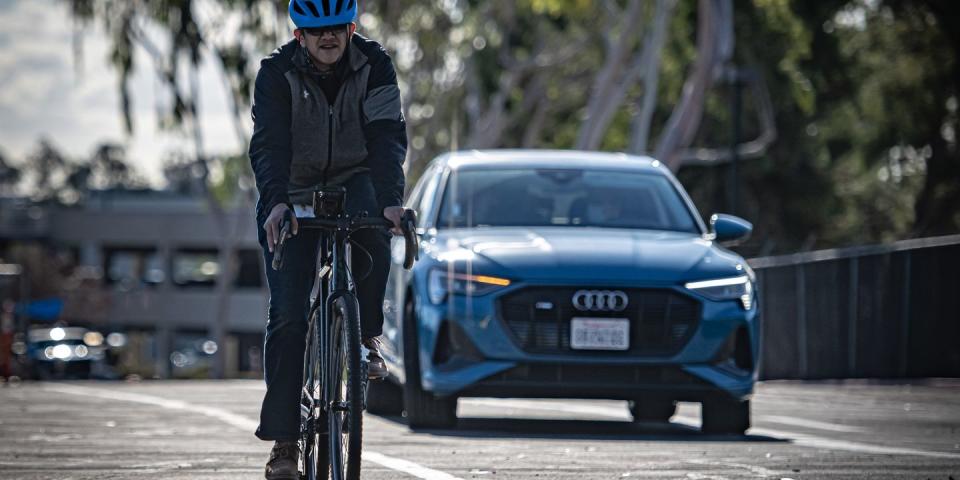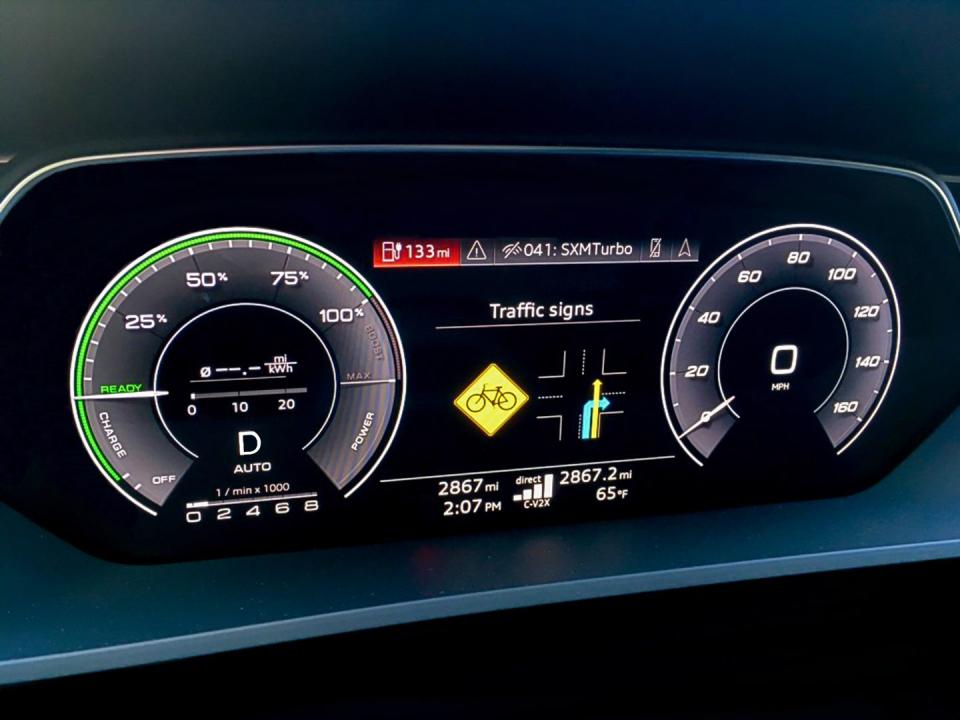Audi and Spoke Have Ways to Improve Bicycle Safety

Audi partners with Spoke Safety and others to implement its cellular vehicle-to-everything technology.
The cellular vehicle-to-everything (CV2X) tech can notify drivers of prospective bicyclists and pedestrians.
CV2X technology could make the roads safer for bicyclists.
Riding a bicycle in a densely populated metropolitan area poses more than a few risks: busses, cars and trucks. Of course, these risks are mitigated when everyone is paying attention, but oftentimes there’s at least one distracted person on the road. Distracted driving and riding can come together into a painful and dangerous collision. Hoping to prevent these collisions, the folks at Audi have teamed up with the teams from Spoke Safety, Qualcomm, and Commsignia to start working on specific safety tech.
While this system is still relatively early in its development, it’s effectively just appropriated car-to-car communication technology and downsized it to fit into a bicycle form. Essentially, the system sends cellular signals over the air to alert cars of a bicycle’s presence. Through the magic of modern automotive tech, this system can alert the driver of a bicycle’s position and project its intended direction. Say, if you’re turning right across a bike lane, the system can alert you that a bicycle is traveling to your right and preparing to enter the intersection, which should give the driver enough time to react and prevent a collision.
The big question: How does this work in practice? Well, in a one-on-one demonstration, the answer is well. Using a Spoke-Safety-prepared bicycle and an appropriately modified Audi crossover, this cellular vehicle-to-everything, or CV2X, technology accurately reported the bicycle’s position to the Audi. The information hit the Audi’s gauge cluster and gave the driver plenty of time to prepare for a possible bicyclist making an appearance. The warning showed up in the Audi’s instrument cluster and was relayed similarly to a parking sensor.

Of course, this won’t ever be free. According to the team at Spoke Safety, this kind of technology will likely roll out initially to higher-end bicycles to help cover the cost. Though, there was a mention of an aftermarket solution for older or more price-friendly bicycles. On the automotive side, Audi is still figuring out how it plans to roll this out to consumers when the time comes.
But that time might not be for a while. With China taking a stronger position on this kind of technology, we’ll probably see early adopters jumping onto tech like this sooner than later. Still, mass adoption could take a decade, at least on the automotive side.
Even if it takes years for this kind of technology to see mass adoption, it could help curb some of the 49,000 bicycle injuries NHTSA reported in 2019. With rising fuel costs, more people could opt to pedal their way to their local parks, and this kind of tech could be a huge benefit down the line.
Do you think connected cars, bicycles and infrastructure will see mass adoption? Tell us your thoughts below.

 Yahoo Autos
Yahoo Autos 